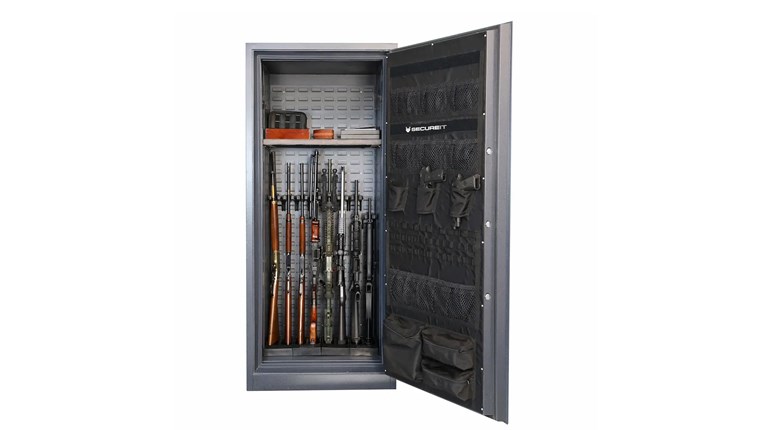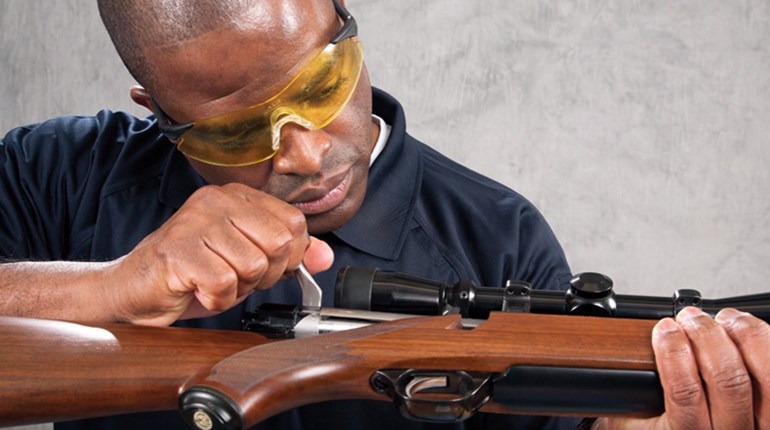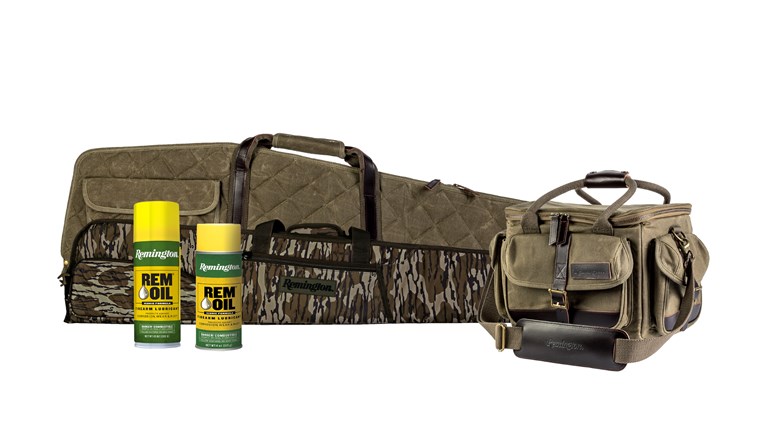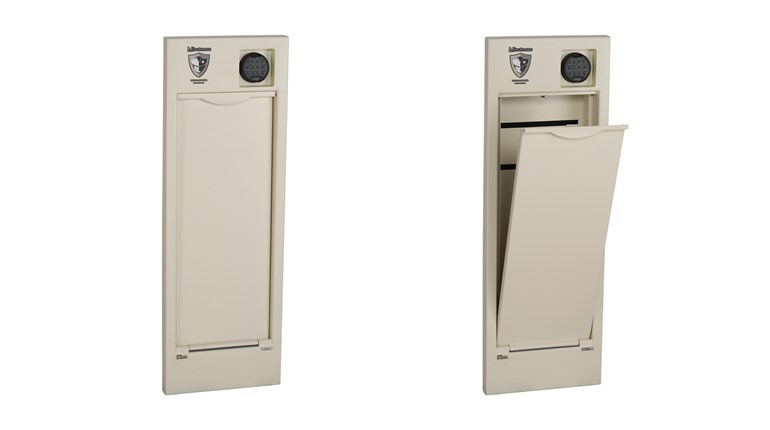
Accumulating all the right supplies is crucial if you plan to weather the storm until authorities ride to the rescue, but the manner in which your gear is stored could determine whether it’s up to the task when the time arrives. Ammunition, firearms, food and even medical supplies can succumb to the “elements,” even when in airtight storage.
Gun safes are the best option for thwarting theft and riding out the worst of catastrophes—including fire—but an uncontrolled climate within can take a heavy toll on the contents. Humidity is the culprit and even the most expensive vaults are not airtight, due to a small, removable plug at the back to run an electric cord for a light or heating unit. Open the door a few times, add a microscopic leak or two, and it’s obvious airborne moisture is unavoidable.
Airtight containers and good safes reduce humidity and rust concerns when firearms and gear have a coating of protectant, but condensation and damage can still occur. Changes in temperature are the biggest concern.
This explanation is rudimentary, at best, but the dynamics in a gun safe explain the problem. Water molecules suspended as humidity float around harmlessly until they contact a surface at or below the temperature at which the air can hold them. At this point, they condense (water forms), and rust/oxidation can begin. The dampness would distribute evenly in interior objects, but metal is an extremely efficient thermal conductor—if one end of the barrel is hot, the entire length heats. The converse is also true, so a long gun receiver at the bottom of a safe, where it’s coolest because heat rises, drains warmth from the entire length of its barrel, including the muzzle end surrounded by air still rich in humidity.
Light bulbs and heating elements, like the Golden Rod, maintain a slightly elevated interior temperature to mitigate the problem—until the power goes out. Airtight containers in your trunk, garage or bunker don’t have the luxury of electronic aids, so the contents at the mercy of the environment.
The solution is desiccants, materials that suck moisture from the air. More than likely you’re already familiar with the principle’s as rice in a restaurant’s saltshaker, which absorbs moisture to prevent the seasoning from clumping during humid seasons. Those small “Do Not Eat” packets included in the packaging of new products are also a desiccant.
They are not expensive, but details on performance are sketchy at best, so we took several for a test drive—from prepper-popular kitty litter to a hurricane-drying industrial solution. The results should help you make the right decision without breaking the bank.
There are a few details to keep in mind, however. Some desiccants change color when they are saturated and need of recharging—so-called “indicating desiccants.” Traces of cobalt chloride perform that task, and although it’s not deemed a dangerous additive (because it’s trapped in the material), you may not want it near foodstuffs or medical supplies. An airtight MTM Case-Gard Survivor Ammo Can provided the chamber for sealing each product with a hygrometer for 96 hours, multiple times, through several recharges. Only those options that can be refreshed/re-used were included to minimize cost, and nothing was included that will get wet or leak trapped moisture.

Silica gel is an efficient desiccant and the inexpensive material in those tiny medicine-bottle packets and new-product packaging. There are also some kitty litters composed entirely of the material, so testing began with a non-clumping version of it.
Relative humidity did not change the first round of testing—40 ounces for 96 hours. I baked for 3 hours at 300 degrees F (the recommended silica gel-recharge procedure), and the next test saw the reading drop from 60 percent to 25.3. The results made it obvious the “airtight” packaging was not, so prebake if you go this prepper-popular route.
During the rest of the procedure, effectiveness varied wildly, in one case moving the hygrometer by only 20 percent. Its irregular shape may contribute to the inconsistency, as well as the fact that the same weight occupies twice the volume as its commercial counterparts.
Its oven-safe metal canister looks like it was designed alongside black-and-white TVs, but Liberty Safe’s Mini-Canister really performs. It has 40-grams of spherical, indicating desiccant, and right out of its packaging (unlike the kitty litter) dropped relative humidity from 62 percent to 22, on average. It didn’t slow with recharges and was extremely consistent. The company offers larger versions of the same material, but this little unit slips into just about anywhere, turns pink when it’s time to bake and sets you back only $7.99.
Drierite doesn’t make a gun-specific product. It’s produced from a naturally occurring mineral—gypsum—and used to keep industrial containers moisture free. And when I say free, we’re talking about 40 ounces of this stuff burying the hygrometer needle at 10 percent (from an initial reading of 60) every single time. A company employee who uses it in his gun safe said to go with No. 6 mesh—a measure of grain size—although we tested No. 4. It’s slightly chalky, unlike the silica gel, so he puts it in an old tube sock to minimize dust. This is powerful stuff, though, so too much could crack wood stocks and the recharging procedure is different, two hours in the oven at 450 degrees. A 1-pound bottle of No. 6 will set you back $5.52 (shipping is extra). It is also available in an indicating version.

If you’re looking for a product that doesn’t require the oven, take a close look at Eva-Dry’s lineup. The graphics aren’t exactly tailored to gun owners, but one of the co-owners uses the product in his gun safe.
The Eva-Dry 500 performed like the Mini-Canister in testing, with a difference—humidity readings dropped much slower, at a methodical and consistent pace. It also has a larger capacity, so it’s more applicable to larger safes and containers. It indicates when it needs to be recharged, a procedure that requires it to be plugged into an electrical outlet for 12 to 15 hours (it took a few hours longer in testing). For smaller applications, consider the Eva-Dry 333. MSRPs are $34.95 and $24.95, respectively.
There’s no reason to risk re-using those small packets that are probably already saturated anyway. For the cost of a couple boxes of cartridges, now you have a no-muss, no-fuss system to protect your gear from moisture. If the unthinkable happens, the meager investment will pay huge dividends.
Regardless what you’re protecting, and whether it’s to help you survive a wildfire, hurricane or long-term power outage, go airtight. No one will call you paranoid when you spend a few dollars more on a desiccant to keep your supplies safe, dry and unspoiled, especially when it’s rechargeable. It’s probably the least-expensive “prep” you can make.





































